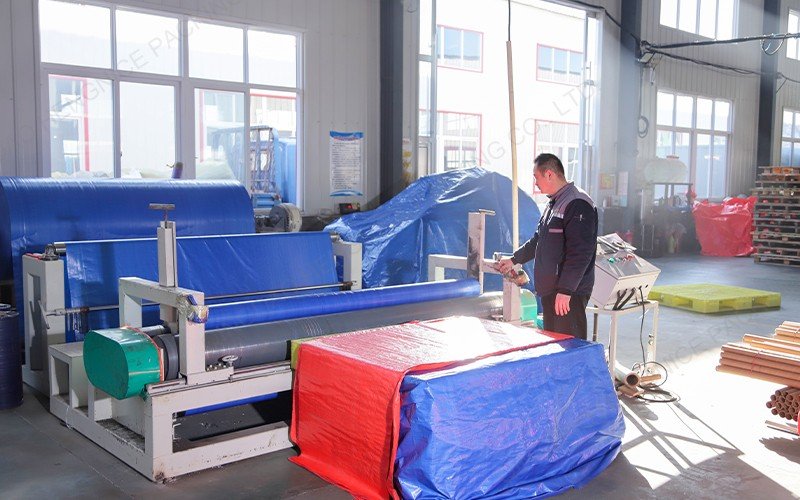
PE tarpaulins, also known as polyethylene tarpaulins or poly tarps, are widely used for various purposes such as covering and protecting goods, temporary shelters, construction sites, and agriculture. Here are some advantages and disadvantages of PE tarpaulins:
Advantages:
1. Cost-effective: PE tarpaulins are relatively inexpensive compared to other types of tarpaulins, such as PVC or canvas. This makes them a cost-effective solution for many applications.
2. Waterproof: PE tarpaulins have excellent waterproof properties, providing reliable protection against rain, moisture, and water damage. This makes them suitable for covering and protecting goods or creating temporary shelters in outdoor settings.
3. Lightweight and easy to handle: PE tarpaulins are lightweight, which makes them easy to handle and transport. They can be folded or rolled up for convenient storage and portability.
4. UV resistant: Most PE tarpaulins are treated with UV inhibitors, making them resistant to the damaging effects of sunlight. This prolongs their lifespan and helps maintain their strength and integrity even when exposed to prolonged sunlight.
5. Wide range of sizes and colors: PE tarpaulins are available in various sizes, thicknesses, and colors, providing flexibility to meet different application needs. This allows for customization and selection based on specific requirements.

Disadvantages:
1. Less durable compared to other materials: PE tarpaulins are generally less durable and have a shorter lifespan compared to materials like PVC or canvas. They are prone to tears, punctures, and abrasion damage, especially in rough or heavy-use environments.
2. Limited strength and load-bearing capacity: PE tarpaulins have relatively lower strength and load-bearing capacity compared to materials like PVC or canvas. They may not be suitable for applications that require high tensile strength or heavy-duty usage.
3. Susceptible to temperature variations: PE tarpaulins can become brittle in extreme cold temperatures, which can lead to cracking or tearing. Similarly, excessive heat can cause the material to become soft or melt, compromising its integrity.
4. Environmental concerns: PE tarpaulins are made from polyethylene, a non-biodegradable material. This raises concerns about their impact on the environment, especially if not properly disposed of or recycled.
5. Limited breathability: PE tarpaulins have low breathability, which can lead to condensation buildup when used to cover items for extended periods. This can result in moisture-related issues, such as mold or mildew growth.
When considering the use of PE tarpaulins, it's important to assess the specific requirements of your application and weigh the advantages and disadvantages against your needs and priorities.